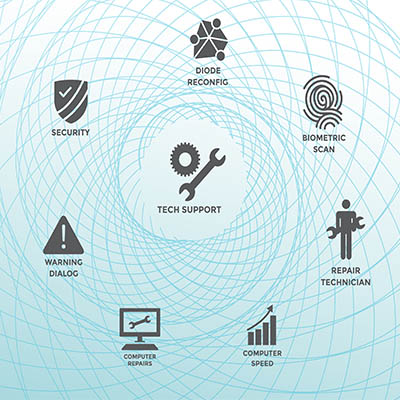Nowadays, technology isn’t just an advantage; it’s an essential part of everything you do; and with endless new tools appearing, how do you decide which tech investments are genuinely good for your business and which are just distractions? Saying yes to everything can drain your budget, while saying no to the right innovation can leave you behind.
Navigating this is difficult and needs a smart approach. Here are key tips to help you know when to embrace new technology and when to politely decline:
Start with Your Business Goals
Before looking at any tech, clearly define your business objectives. Are you aiming to boost efficiency? Expand markets? Improve customer experience? Reduce costs? Every potential tech investment must directly support one or more of your main goals. If it doesn’t help you reach your objectives, it’s likely a no.
Identify the Problem You’re Solving
Technology should be a solution. What specific issues or inefficiencies will this tech fix in your current operations? For example, if manual data entry slows your sales team, a CRM system might be a yes. If your communication methods cause misunderstandings, a new collaboration platform could be the answer. If you can’t pinpoint the problem the tech solves, it’s a warning sign.
Calculate the Potential ROI (Return on Investment)
This is crucial. While not every benefit is purely financial, try to estimate the tangible returns. Will it save money long-term? Increase revenue? Free up employee time for more productive tasks? Think about both direct financial gains and indirect benefits like better morale or customer satisfaction. If the projected ROI is unclear or nonexistent, be very cautious.
Assess the Total Cost of Ownership (TCO)
Beyond the initial price, what are the ongoing costs? Consider:
- Implementation – Installation, setup, data transfer.
- Training – Getting your team up to speed.
- Maintenance and support – Subscriptions, licenses, help desk.
- Integration – How well does it work with your existing systems?
- Downtime – During setup or if issues occur.
A seemingly cheap solution can quickly become a money pit if you ignore the TCO.
Consider Scalability and Future-Proofing
Will this technology grow with your business? Investing in a solution that quickly becomes outdated or can’t handle increased demand wastes resources. Look for flexibility, open APIs for integration, and a clear upgrade path.
Dealing with Vendors
Vendors play a big role in your ability to operate as intended, but it’s not always easy. You will definitely want to do your research. Here are some tips:
- Read reviews of would-be vendors.
- Ask for case studies to see how similar businesses benefited.
- Request references and talk directly with current customers.
Remember, even a great product can fall short with poor customer service. You’ll want to focus on the responsiveness of the support they offer, take a look at their track record, and consider how their products/services will impact your ability to do what you do.
The world of business technology is exciting, but it needs a keen eye. By consistently asking the right questions, focusing on your business needs, and doing your homework, you’ll confidently know exactly when to engage or pass to find the right relationship.
At North Central Technologies, we help all of our clients choose the right technology to not only function effectively and meet their financial and operational demands, but also to secure and protect their business’ data. Give us a call today to learn more at 978-798-6805.







